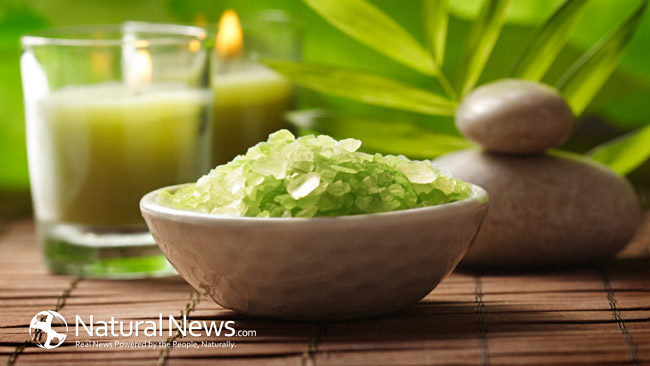Is it the salt or the relaxation benefits that has people coming in droves to breath in the salty air in a salt cave?
Salt caves or salt grottos are popping up in cities all over the world. The premise is that breathing in salty air is beneficial for respiratory issues such as asthma, allergies, COPD and even cystic fibrosis. Further, claims of the healing effects of salt therapy have been made for psoriasis and eczema.
Salt cave therapy is nothing new. People have been travelling to Poland and Russia for years to spend time in natural salt caves for sought-after treatment of respiratory issues, skin diseases and blemishes.
The positive effects of salt on airways were first noted in Eastern Europe in 1843 when a Polish doctor documented how salt mine workers didn’t seem to suffer from the same respiratory problems as the general population.
How Does Salt Therapy Work?
Salt therapy is also known as halotherapy which means “dry salt aerosol inhalation therapy”. The theory is that salt helps reduce inflammation and mucus.
In most cases, Himalayan salt is used in halotherapy, definitely not table salt. There are 84 minerals and trace elements in Himalayan salt including magnesium, iron, boron, potassium, sulphur, calcium and manganese. These are vital elements for health.
But Does It Really Work?
You don’t have to look very far to find raving fans of salt therapy. Many report that they threw out their asthma inhalers and allergy meds after experiencing salt therapy. In most cases, a series of treatments is recommended for best respiratory benefits.
As far as scientific research, very little work has been published on the efficacy of salt therapy. One study in 2006 showed positive results in salt chamber therapy among 32 asthma patients. Another 2006 New England Journal of Medicine study found that inhaling salt-infused vapor improved breathing for 24 patients with cystic fibrosis.
Don’t toss out your inhaler just yet. Most doctors agree that salt therapy is safe but they caution that it should be a complement to traditional methods. Others point out that saline therapy has been a part of traditional therapies used to treat respiratory issues for years.
How Does a Salt Cave Therapy session work?
I had the opportunity to experience a salt cave recently. For $25, we relaxed for 45 minutes in an underground cave (man-made) filled with 45 tons of Himalayan salt. This salt, we were told, was formed during the Jurassic era over 250 million years ago.
The cave was constructed of coarse ground salt on the floors, salt blocks on the walls and icicle-like crystals hanging from the ceiling. Glowing lights were built into the walls and ceiling.
A dry micro-climate, the temperature was kept at 72 degrees F and the air was 40% humidity. The air in the cave was saturated with micro particles (1-5 micron) of negatively charged salt, small enough to be absorbed through the skin and into the lungs.
We relaxed with 10 other people on lounge chairs while soothing music played. Several others stretched out directly on the salt floor. Wrapped in a blanket (fully clothed, but shoes-optional), we could faintly smell and taste the salty air that was circulating around us.
Cave sessions can be combined with salt scrub massages, therapeutic massages and even yoga, Reiki or Tai Chi classes. Many salt caves offer separate caves for children with games and toys.
Beautifully glowing salt lamps and salt pipe inhalers are alternative salt therapy treatments for those who don’t have access to a salt cave.
Did it Work?
While in the cave, my headache disappeared and my sinuses cleared. Those effects lasted the remainder of the day. My spouse had the same experience. It was extremely relaxing and energizing all at the same time.
Was it a placebo effect? Were the reasons we felt better because of the relaxation and pampering? All I know is that it was a therapeutic treat and I would definitely do it again.
Search for a salt cave in your city. Schedule a cave visit at your next vacation spot—a wonderful idea for a rainy day activity.
Joli Tripp is a wellness advocate, blogger, professional home stager, Realtor, wife, and self-proclaimed foodie.
Joli is passionate about making simple changes at the grocery store, at home and in life to attain abundant health. Her journey back to health is held out for others to examine and gather their courage to do the same. She provides practical advice about food, wellness, home and garden using natural solutions such as essential oils.
FREE PRINTABLE: List of Food Ingredients You May Want to Avoid.
Currently, Joli resides in Southern California where she blogs, Posts, Tweets and Pins about living a wellness lifestyle.
Sources:
http://abcnews.go.com/Health/salt-therapy-big-thing-pampering/story?id=25569918
http://www.poland.travel/en/spa–wellness/salt-caves
http://www.express.co.uk/life-style/health/423396/Can-sitting-in-a-salt-cave-cure-my-asthma
http://www.ncbi.nlm.nih.gov/pubmed/16629791
http://www.healthcentral.com/allergy/c/3387/108662/therapy-sinusitis/
http://www.doctoroz.com/videos/two-alternative-medicine-secrets





